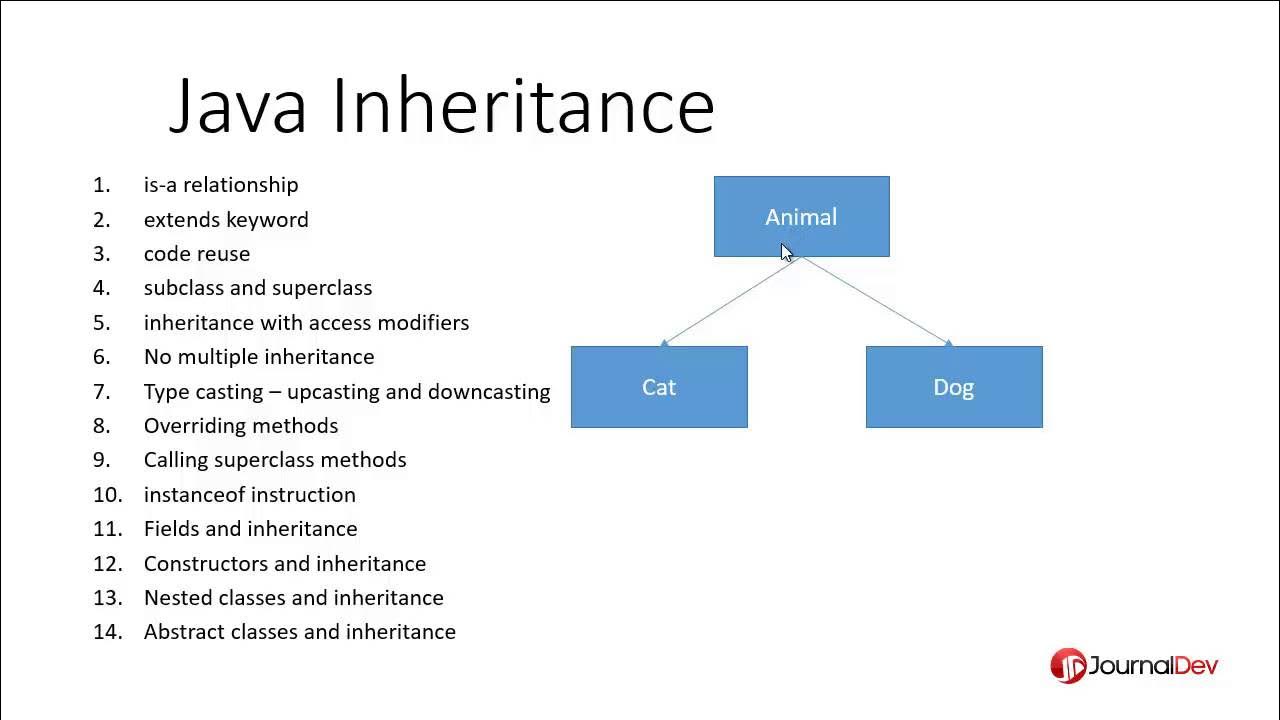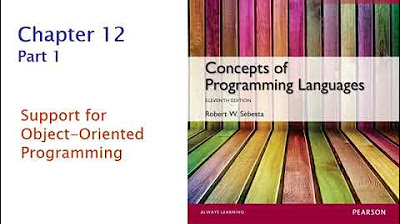Java's Creators Rejected Multiple Inheritance - Here's Why
Summary
TLDRThe video explains why Java does not support multiple inheritance, emphasizing the complexities and potential issues, such as the 'Diamond Problem,' that arise from it. Instead of allowing classes to inherit from multiple parent classes, Java enables them to implement multiple interfaces. This approach simplifies the language and prevents ambiguity, allowing developers to define functionality through interfaces without the complications of a complex class hierarchy. The creator's decision reflects a focus on practicality, as multiple inheritance is rarely needed in real-world scenarios, making interfaces a more efficient alternative.
Takeaways
- 😀 Java does not support multiple inheritance, a decision made by its creators to simplify the language.
- 😀 Inheritance allows one class to acquire fields and methods from another, creating a parent-child relationship.
- 😀 Multiple inheritance means a class can have more than one parent class, which can lead to complexities.
- 😀 The diamond problem occurs when a subclass inherits methods with the same name from multiple parent classes, causing ambiguity.
- 😀 Java avoids the diamond problem by prohibiting multiple inheritance altogether.
- 😀 Other programming languages like Python and C++ handle multiple inheritance but may face the diamond problem.
- 😀 Java's design emphasizes simplicity, making it easier for developers to avoid unexpected behavior.
- 😀 In most practical situations, developers can achieve their goals without needing multiple inheritance.
- 😀 Java allows classes to implement multiple interfaces, offering flexibility without the pitfalls of multiple inheritance.
- 😀 Interfaces serve as contracts that define methods a class must implement, facilitating multiple functionalities.
Q & A
What is inheritance in object-oriented programming?
-Inheritance allows one class to acquire the fields and methods of another class, facilitating code reuse and establishing a hierarchical relationship between classes.
What is the primary reason Java does not support multiple inheritance?
-Java's creators decided against multiple inheritance to avoid complexity and potential issues, particularly the diamond problem, where ambiguity arises when inheriting methods from multiple parent classes.
What is the diamond problem?
-The diamond problem occurs when a class inherits from two classes that have a method with the same name, creating ambiguity about which method should be used in the child class.
How does Java handle inheritance?
-In Java, a class can extend only one other class, allowing it to inherit fields and methods from that parent class. This avoids the complications that come with multiple inheritance.
What alternatives does Java provide instead of multiple inheritance?
-Java allows classes to implement multiple interfaces, which define methods that the implementing class must provide. This enables a form of multiple inheritance without the complexities associated with classes.
What is an interface in Java?
-An interface in Java is a contract that specifies what methods a class must implement, without dictating how these methods should be implemented.
Can a Java class implement multiple interfaces?
-Yes, a Java class can implement multiple interfaces, allowing it to fulfill multiple roles and behaviors as defined by those interfaces.
What was James Gosling's perspective on multiple inheritance?
-James Gosling stated that Java omits features of C++ that are rarely used or poorly understood, including multiple inheritance, as they often lead to more problems than benefits.
Why is simplicity considered important in Java's design?
-Simplicity helps prevent unexpected behaviors and makes the language easier to understand and use, especially for developers who may not be familiar with complex inheritance hierarchies.
What kind of problems did Java's creators aim to avoid by excluding multiple inheritance?
-Java's creators aimed to avoid issues related to complexity and ambiguity that could arise from multiple inheritance, particularly in large and complicated class hierarchies.
Outlines

This section is available to paid users only. Please upgrade to access this part.
Upgrade NowMindmap

This section is available to paid users only. Please upgrade to access this part.
Upgrade NowKeywords

This section is available to paid users only. Please upgrade to access this part.
Upgrade NowHighlights

This section is available to paid users only. Please upgrade to access this part.
Upgrade NowTranscripts

This section is available to paid users only. Please upgrade to access this part.
Upgrade NowBrowse More Related Video

Inheritance in Java - Java Inheritance Tutorial - Part 1

Kotlin For Beginners - Variance, Covariance, Contravariance and Type erasure

Java Inheritance | Java Inheritance Program Example | Java Inheritance Tutorial | Simplilearn

JAVA TECHNICAL QUESTION AND ANSWERS FOR INTERVIEW PART IV INHERITANCE & INTERFACES

COS 333: Chapter 12, Part 1

Minuto WP - Abril 2024
5.0 / 5 (0 votes)